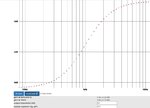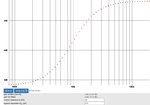All other things staying the same (cathode bypass, etc.), it seems like the higher the V1a plate resistor, the gainer the amp, but also the more snarl and grind. If you go over 330K-390K, you will start to put DC on your guitar's volume pot and it will be scratchy. So you have to add a blocking cap to the input grid. The higher the value of that resistor, the lower the plate voltage. The Chupa's stock value is 470K. The Yeti is 390K. A lot of other builders use lower values like 330K, 220K, etc. And will boost gain later on in the preamp, which is cool too.
I seems that lowering load resistance increases 2nd harmonic and is less shrill according to Merlin Blencowe:
"This shows clearly that a lower load resistance produces more nonlinear distortin than a higher load resistance. Using a higher load resistance is therefore preferable to hifi, except where the high resistance introduces too much noise. However, for guitar it is important to be aware that although the total harmonic distortion reduces as load resistance increases, what little distortion is produces contains an increasing proportion of odd harmonics, which can lend a bright, glassy tone, though it can sometimes tend to shrillness.
Furthermore, a larger load resistance gives a lower anode voltage for a given bias voltage. This means that when the valve is driven towards grid-current limiting the ability of the anode potential to draw electrons through the grid is reduces, allowing heavier grid current to flow instead. The result is a more sudden onset of grid-current limiting and harder clipping for a given source impedance, producing still higher harmonic content and a more hard, 'driven' tone."
Ok I swapped out the 470pF cap in the tone stack for a 560pF and the 470pF in the treble peaker for 500pF. Definitely more mid-range growl and thicker.
I think the difference will be even more noticable with slope resistor change, regarding growl...
Oh, also am I understanding this correctly?
The tone stack cap shifts the curve left/right and the resistor shifts the curve up/down?
So a lower value cap shifts the curve to the right, creating a higher resonant frequency?
Tone stack cap, determines how far left on the eq chart do you want your treble to start,
similar to bright switch where higher values start to introduce high mids... ex. 1nf compared to 220pf
slope resistor change also shifts the mid dip and bass peak, where higher values will shift to the right more...
if you look closely at what fusedbrain posted








